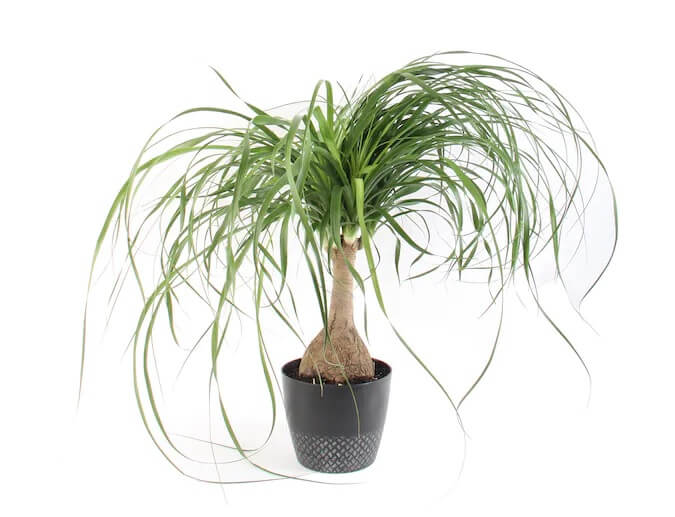Beaucarnea recurvata, the elephant’s foot or ponytail palm, is a popular houseplant. The thick trunk with long, green leaves makes the plant a decorative eye-catcher. But cat owners should think twice about bringing the elephant’s foot into their home because the green plant contains poisonous saponins.
Elephant’s Foot or Ponytail Palm and Cat
- The elephant foot is a popular houseplant with a thick trunk and long, green leaves.
- The plant contains saponins – a toxin that is slightly toxic to humans and cats.
- Elephant foot poisoning can cause skin irritation, vomiting, and even chronic inflammation of the gastrointestinal tract.
- Due to the risk of poisoning, the elephant foot has no place in a cat household.
Is Ponytail Palm Poisonous to Cats?

The leaves of the elephant’s foot contain so-called saponins. This poison serves the plant to ward off predators and represents a natural protective mechanism. It is precisely this substance that makes elephant feet so dangerous for cats because saponins are slightly poisonous and should not be consumed by the house tiger.
Regular nibbling and eating of the leaves can lead to symptoms of poisoning. If the poisonous juice from the leaves of the elephant’s foot gets on the skin or mucous membranes of the cat, it can also cause skin irritation.
Symptoms of Elephant’s Foot Poisoning
If your cat nibbles on the elephant’s foot, the poisonous saponins enter the bloodstream. In some cases, even small amounts are enough to cause the first symptoms of poisoning. Typical symptoms of poisoning from the elephant foot include:
- Irritation of the mucous membranes;
- Convulsions, tremors, or dizziness;
- Malaise, apathy, or tiredness;
- Abdominal pain and vomiting;
- Bloodred diarrhea;
- Gastroenteritis and chronic intestinal inflammation.
The first symptoms after eating the elephant foot leaves are usually malaise and vomiting. If the cat regularly nibbles on the plant, serious illnesses such as gastrointestinal infections (gastroenteritis) can occur in the long term. Gastroenteritis is very painful for cats and in the worst-case scenario can become chronic.
Cat Has Eaten Elephant’s Foot – What to Do?
If your house tiger has eaten the poisonous houseplant, watch for typical symptoms of poisoning. If the cat behaves abnormally or is vomiting, contact your veterinarian. If the cat has only nibbled on the elephant’s foot for a short while in an unobserved moment and does not experience any symptoms, you should, for example, use a drinking fountain to encourage the cat to drink plenty of water so that any poison that may have been absorbed is quickly flushed out of the body.
Alternative Plants for Cats
As a cat owner, you should not use the elephant foot as a houseplant to prevent poisoning in the first place. The long, green leaves are particularly attractive for cats, as they are similar in shape to cat grass and invite you to nibble.
It is not always possible to keep an eye on the cat, so you cannot control whether the house tiger is tampering with the plant in an unobserved moment. For the good of your cat, you should only keep the elephant’s foot in a room to which the curious four-legged friend has no access.

